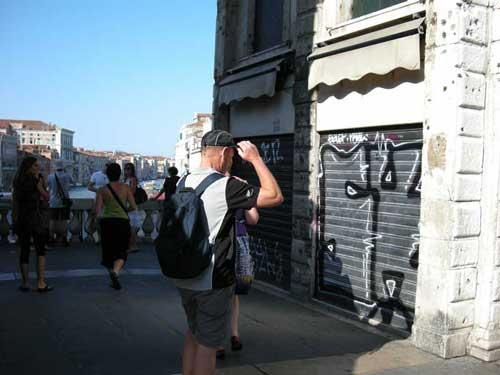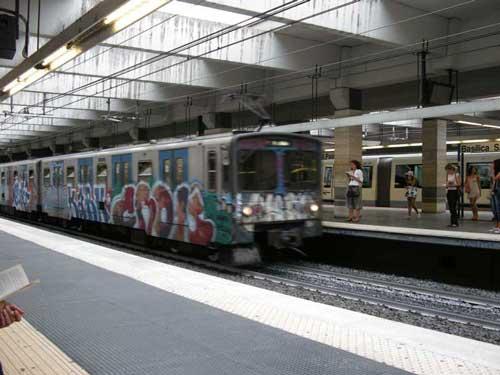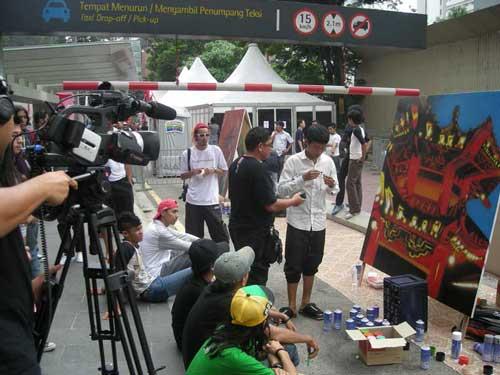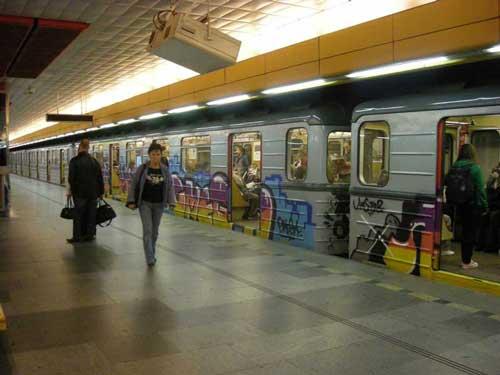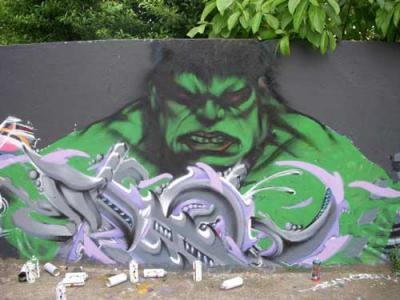
Talk: Graffiti Art

Today we talk with the visual arts student David Novak about graffiti art.
So why are you interested in graffiti art in the first place?
I am a visual person and graffiti art is a very visual art form. So I guess it was kind of natural that I got attracted to it once I knew about it. For the first time in my life I encountered graffiti art by the end of the 1980s. It was in the streets of Western Europe. First I did not know what it was, but it was visually appealing to me. Then later I was interested to learn more about it.
Can you summarize graffiti art’s general history, its timeline?
Graffiti art is an urban phenomenon. It started developing by the end of the 1960s on the east cost of the USA – in Philadelphia and New York City. Graffiti art become later world famous in connection with the New York subway system. Young people started back then in the 1970s to paint on the subway trains in New York City and the aesthetics and the elements of graffiti art became established there. In the 1980s graffiti art spread out of New York to other US cities and to other parts of the western civilization as to Western Europe and to Australia. In the 1990s graffiti art become a worldwide urban art movement and started spreading also into Eastern Europe and to Asia. Nowadays is graffiti art present in nearly all corners of the world.
What is graffiti art about and what are its elements?
Graffiti art is commonly representing the people creating it. The graffiti artists write out everywhere in the urban spaces for this purpose specially created, anonymous artists’ names. To do so they usually use spray paint, markers or paint. The goal is to spread the name everywhere in a city, country, globally and to do it with style. Style is the original, distinguishable way how the graffiti artists present their names to the viewers.
Graffiti art is about lettering of the Latin alphabet and the graffiti artists call them selves because of that “writers”. The elements of graffiti art are in my eyes four: tags, throw-ups, characters and pieces. A tag is the most plentiful graffiti art type. Tags are the artists’ monochrome signatures. Throw-ups are much larger logo like representations of the graffiti artists’ names. Throw-ups are often painted in a roundish, bubble like style consisting usually out of 1-3 colors. Characters are generally all stylistic sorts of human like representations and therefore are characters attractive for the general public. Some graffiti artists specialize in painting characters some others completely omit them. Pieces (masterpieces) are the large scale, colorful and very elaborate representations of the artists’ names.
You are also documenting graffiti art. What is tricky about documentation of graffiti art?
Graffiti art is a very temporary art form. It is usually not created on canvases, but on cities’ buildings, walls, trains and other urban objects. Therefore is graffiti art closely associated with vandalism. The law classifies graffiti art often as vandalism, because the artists creating it do repeatedly paint their artworks without the permission of the properties owner – private or governmental likewise. As a result is graffiti art often rapidly removed from a certain surface or simply painted over.
On the other hand is graffiti art often also painted in legal areas especially designated for this art form. In these so called halls of fames is usually never enough space for all the graffiti artists competing for the available space. As a result are the artworks constantly and periodically painted over by new artworks from other graffiti artists.
To summarize the tricky part of documenting graffiti art, it means that one has to be fast to document it. Sometimes a graffiti artwork lasts only for few hours, days or weeks, but sometimes it can last for months or even years.
Do you think that graffiti art is the same all over the world?
This is a difficult question to answer, but I don’t think so. OK, the elements of graffiti art are everywhere in the world the same, but in some places the graffiti writers incline to do more often the one or the other element of graffiti art. And there are in every country different graffiti artists – individuals – forming the local scene. Local settings as the economical situation of a country, the local policies, the climate, the cultural background and many, many other nuances influence the global graffiti art movement. But then on the other hand, as I said above already, graffiti art is largely about the stylization of the letters of the Latin alphabet and therefore is graffiti art sharing a kind of a similar global feature: letters, letters and letters.
Do you think that graffiti art will be continuing to be part of the urban landscape?
I think so. The authorities in New York tried many things to erase graffiti art, but they never succedded. Contrary. Graffiti art is now part of urban spaces all over the world. So I think it will stay so for some time.
Have you published some book?
Ehhmm...[laughing]... No, not yet. At the moment I am discussing such a posibility with a publisher. So maybe in the future.


